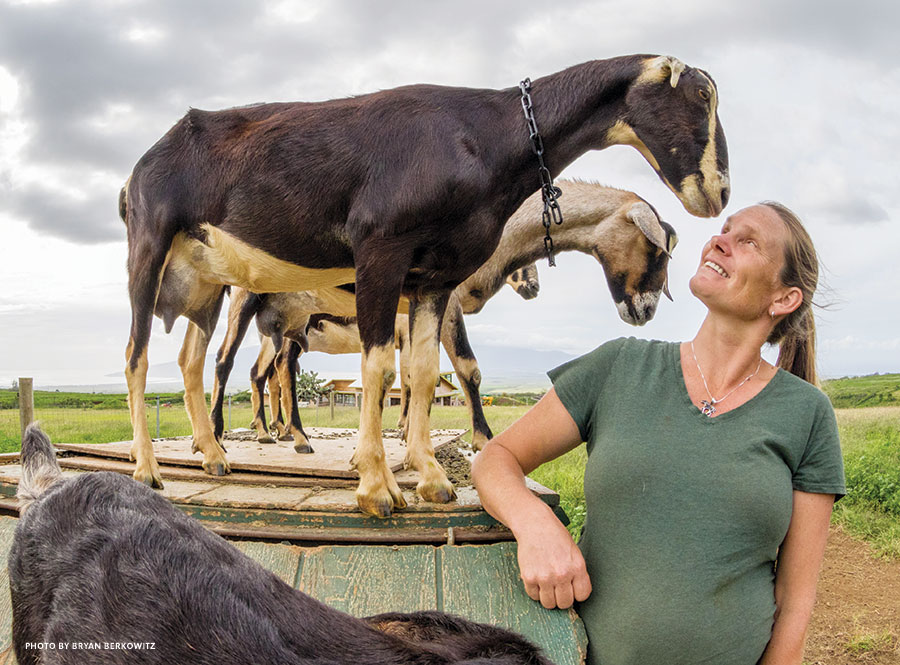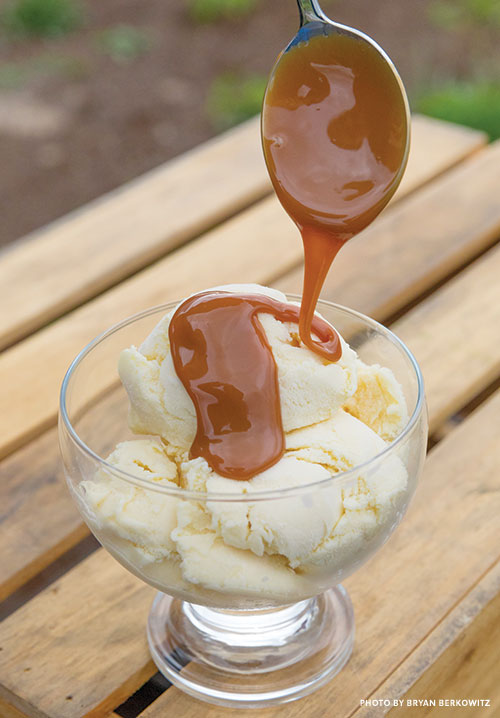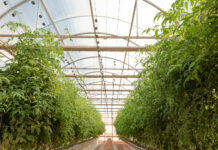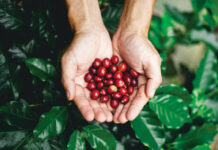Farm to Spoon: Small Footprints on the Mountain
“Jasmine is a troublemaker, like her mom,” Rebecca Rist says, noting the doleful gaze filling the space between two slats on the gate as we step inside the goat pen. More first-name introductions follow. In the past week, her herd has grown from twenty-two to thirty-seven, thanks to an intense synchrony of kidding. Nasal mweah-ehe-ehe-ehes pass urgent messages between the generations. I see an adorable gambol of kids, but Rebecca also sees spots, long ears, and roan-colored markings as she contemplates the genetics of her herd.

Rebecca has the rooted presence of a person who is comfortable working with animals, and a broad smile that conveys how much she likes her chosen path. Goats, she says, are more sustainable than dairy cows; they produce more milk for less input, and cost less than a cow. Her Haleakala Creamery is also showing it’s possible to “grow local” on a small piece of land.
Rebecca’s first goat, a wild mountain critter, was a reward for finding a lost dog. It wasn’t until she got a “real” dairy goat that she understood the potential for blending her love of animals and . . . ice cream. Her entrepreneurial spirit had found a direction, despite—or perhaps because of—her own feelings about the tangy, grassy flavor often associated with goat products.

“I do not like goat cheese. At all,” she adds, in case there was any doubt. “Then I found out I could make caramel sauce with goat milk.” Her sauce is simple: milk, sugar and baking soda. And best of all, no hint of goatiness. For her “Goatlato” ice cream, she adds egg yolks to create a rich, custardy confection, and a bit of caramel to help perfect each flavor and scoopability.
Upslope, near the goat pen, is a building that houses her certified commercial kitchen. The covered slab outside shelters the station where an elevated stand makes the milking process easier. It looks like a spartan workout bench—except for the feed pan that keeps the nannies occupied during milking. It takes about five minutes to extract milk from each goat. For now, the nannies are on break; the kids get all the milk for their first two weeks of life.
Inside is where the magic occurs: Stainless-steel equipment pasteurizes, cooks and freezes the milk, turning it into sweet confection. “Chocolate, vanilla or caramel?” she offers, opening the freezer. I, too, prefer to keep my distance from goat cheese, and even caramel, but one taste, and I’m a convert. It’s really good!
That surprised response is what Rebecca encounters each time she offers samples to the skeptics. Her flavorful creations, including Goatlato, sell at multiple outlets on the island. Her caramel sauce is also online in four different flavors, and she makes a cow’s milk dulce de leche. Blind taste test, anyone?





